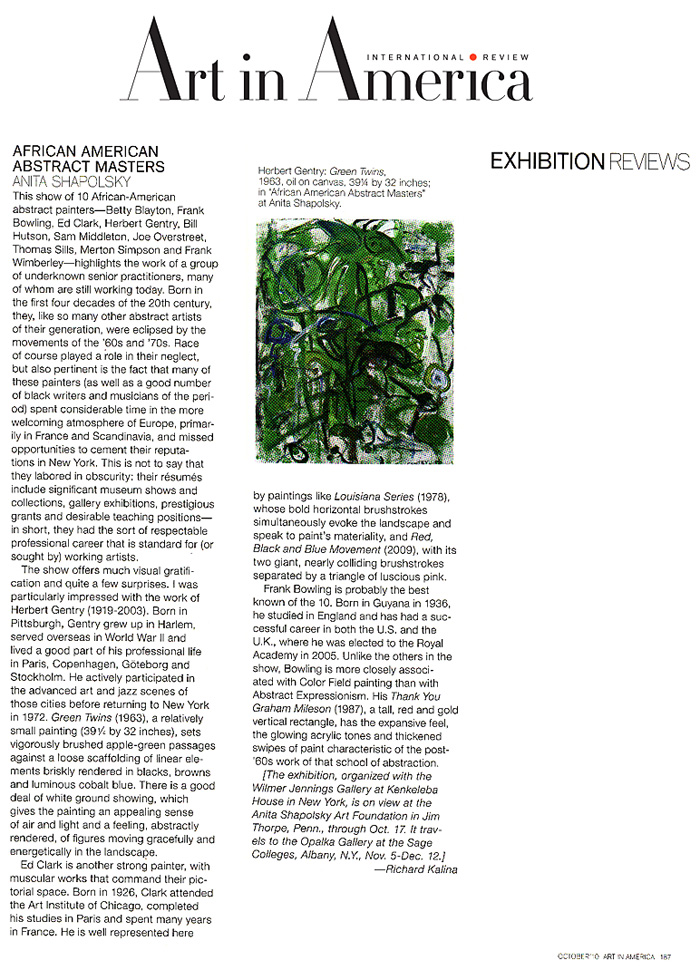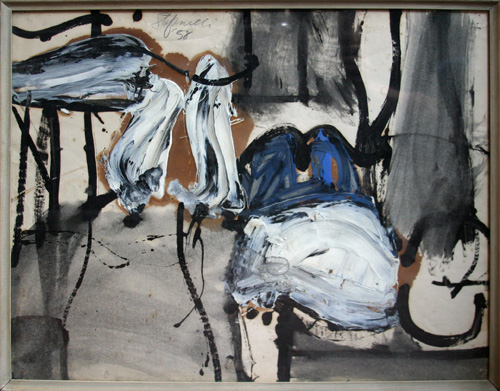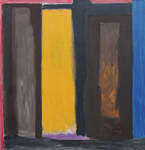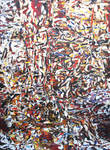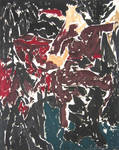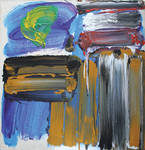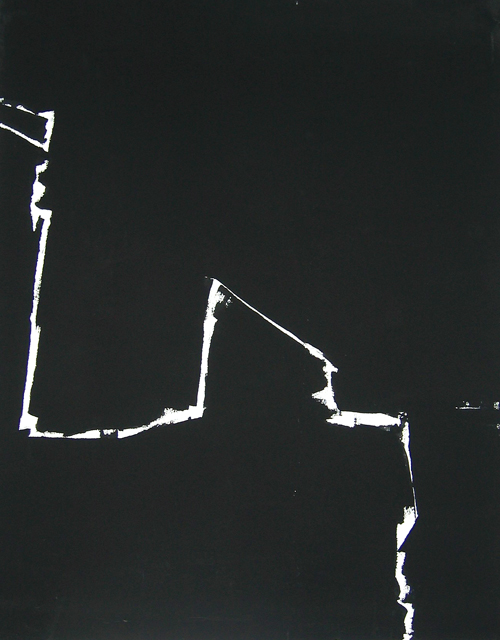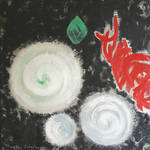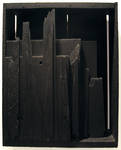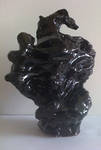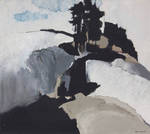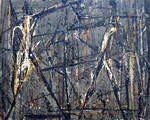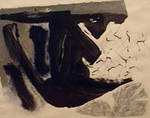New York School Artists thru January 12, 2013
- Joe Stefanelli, Untitled, 1958
Peter Agostini, Alcopley, Edward Avedisian, Seymour Boardman, Ilya Bolotowsky, Norman Bluhm, Ernest Briggs, Gandy Brodie, James Brooks, Peter Busa, Lawrence Calcagno, Herman Cherry, Friedel Dzubas, Jimmy Ernst, John Hultberg, Ruben Kadish, Aristodimos Kaldis, Frederick Kiesler, Albert Kotin, Ibram Lassaw, Michael Loew, Joan Mitchell, Louise Nevelson, Claes Oldenburg, Philip Pavia, Joe Stefanelli, Taro Yamamoto & Wilfrid Zogbaum
AVAILABLE, LIMITED SUPPLY
“The Artist’s World”, softcover edition, $20.00 +shipping
“The Artist’s World”, hardcover edition, $25.00 +shipping
This exhibition is based on the photo classic book, “The Artist’s World”, by Fred W. McDarrah and with text by Gloria S. McDarrah, which documents the New York School Action painters (which included all the avant guard creative, artistic people) in their environs. The first edition was published in 1961. The second edition, published in 1988, was dedicated “to the Artists and to Anita Shapolsky who made this edition possible”. There is an illuminating introduction by Thomas Hess (Art News).
Since I began my gallery in 1982, the older artists I met carried dog-eared copies of the original black and white covered book, which they constantly reminisced about in discussions. It’s a simply written book with three parts and sub-chapters: (1) A Way of Life, (2) Achieving Status and (3) A Definite Stand. The photographs of the artists living quarters, partying, drinking at the Cedar tavern, at the Club with guru Philip Pavia and mentor William Littlefield. This doesn’t make it an “art book” but a chronicle of the reality of the times these artists lived in (late 40’s/50’s). It showed many artistic people who were on the scene, struggling in a society that neglected and negated their efforts. Changes were evident in different areas that strengthened their resolve–Freud, jazz, poetry, criticism. The individual was respected by his peer group. These artists sustained each other and formed what we today call “support groups”.
Over the years, I have exhibited works of most of these artists and knew many of them. In the 80’s the avant guard artists were underground because galleries since the 60’s were exhibiting minimal, pop art, experiments with junk, and happenings due to societal changes–the commercial growth and greed of America, the Vietnam war and loss of faith.
Growing up with Abstract Expressionism, I elected to focus my gallery on these under-represented artists and Voilá!–they had a rebirth and are still being collected, studied and are competitive on the global scene. We also exhibited women artists who were rejected by their male counterparts and gallerists, as well as Latino and African American artists who faced the same treatment. I understood the soul (in the spirit of Martha Jackson and Betty Parsons) of Abstract Expressionism which came from the Depression, WWII and the anger towards society. That is why these artists kept away from political art, and searched within themselves. The artist was art.
The artists selected for this exhibition are not all “big” names, they are an interesting cross-section of the art world as pictured in the book.
The new vigorous movements of the contemporary art world are trying to express their feelings about the world they live in today. There is a coming together in many communities, that give young artists peer support and experience. Countries are also sharing their borders with new ideas from younger artists.
These artists hopefully will appreciate the trials and tribulations of the often rejected New York School Artists who created a great art movement–possibly the greatest. History will tell.
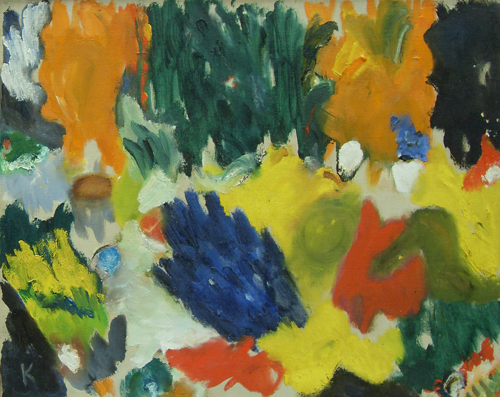
Aristodimos Kaldis, Divine Hand Blessed, 1963, Oil on canvas, 16 1/2 x 20 in

Claire Oldenburg, Untitled, 1970
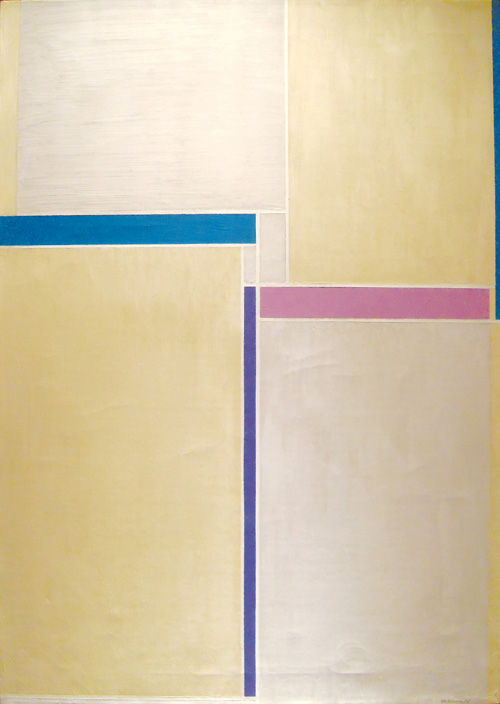
Ilya Bolotowsky, Naples Yellow and Grey, 1958
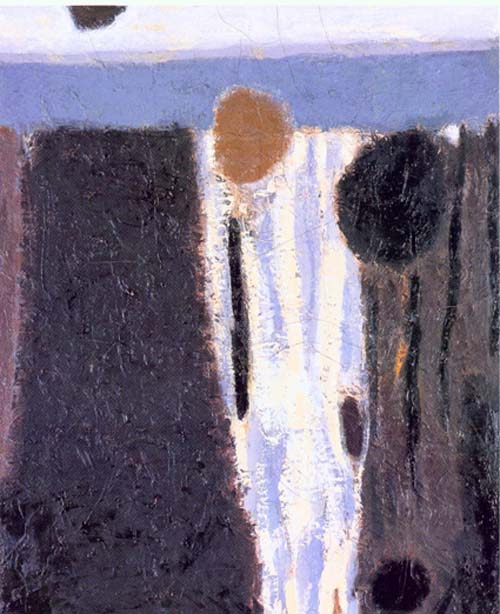
Lawrence Calcagno, Dark Mesa #8, 1956
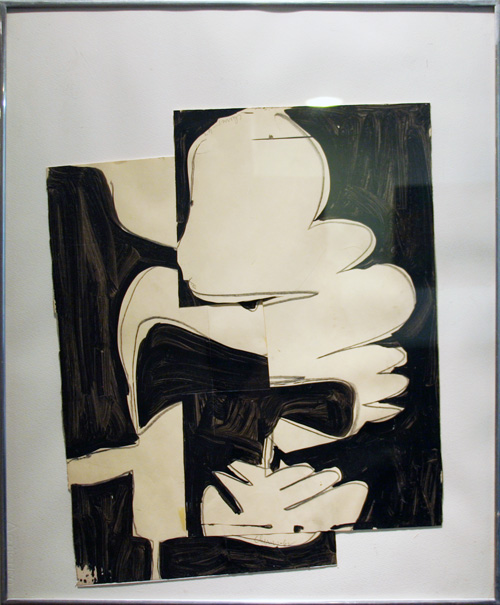
Herman Cherry, No title, 1962
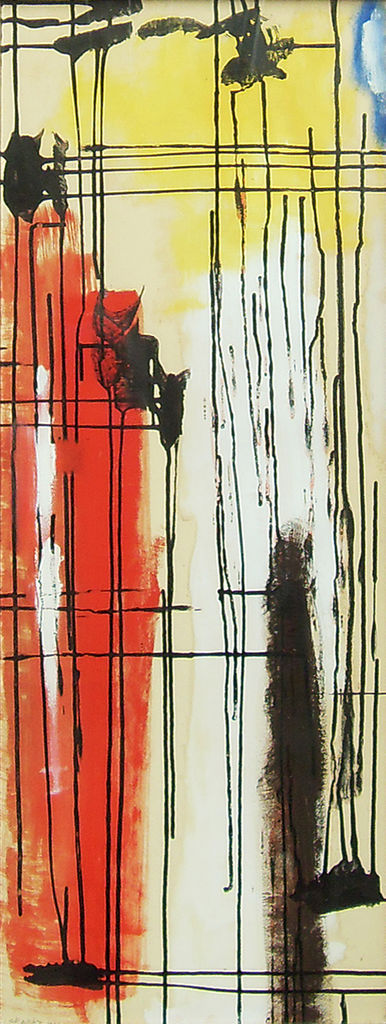
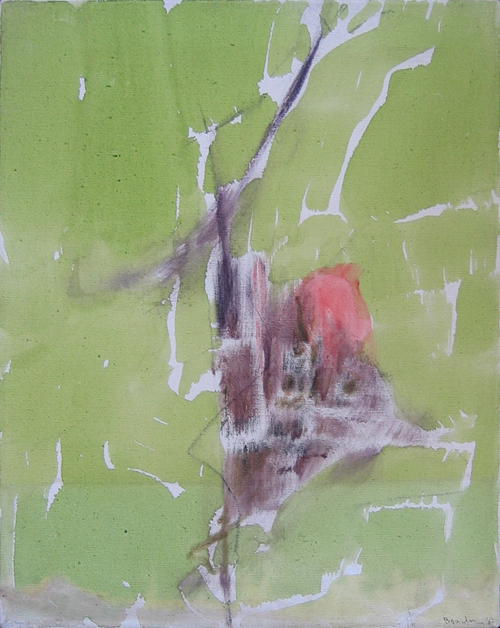


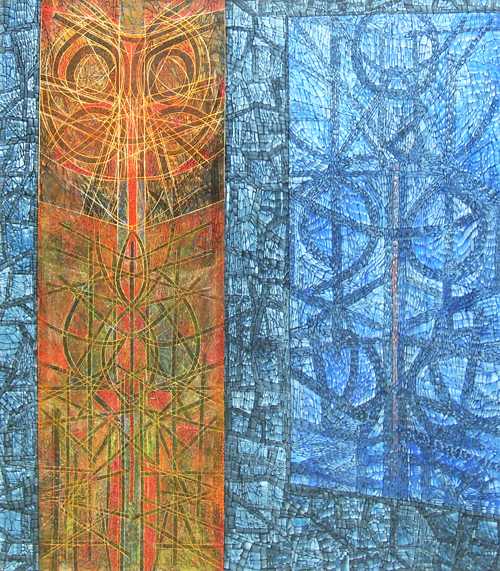
Jimmy Ernst, Oceania, 1963, Oil on canvas, 43 x 28 in

Ruben Kadish

Gandy Brodie, Untitled, 1955

Ibram Lassaw, Gyre, 1995
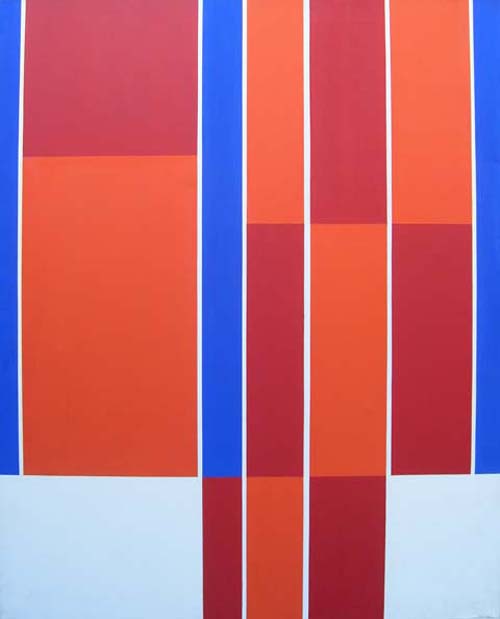
Ilya Bolotowsky, Red, Blue, White Rectangles, 1973
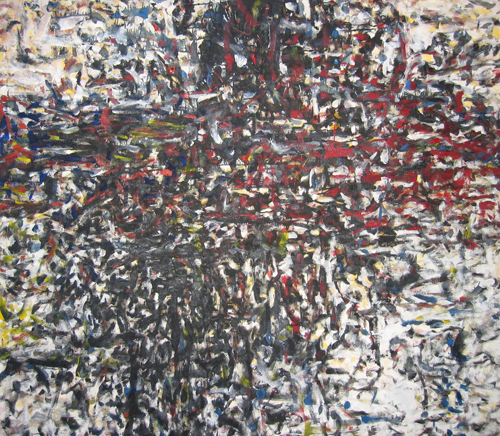
Ernest Briggs, Untitled, December 1951
THREE DECADES OF ERNEST BRIGGS’ ABSTRACT EXPRESSIONIST PAINTINGS
April 17 – August 2012
A native of San Diego, Briggs studied at the California School of Fine Arts in San Francisco (1946-47), the first independent art school outside of New York, where Douglas MacAgy brought together a remarkable faculty including Mark Rothko, Ad Reinhardt, David Park and Clyfford Still. Their influence, in particular, that of his mentor and friend, Still’s visionary aspirations, remained with him for life. In the early 1950s Briggs was pulled along with the Californian diaspora to New York. Almost immediately he was given a one-man show at the Stable Gallery. He developed the rugged California aesthetic into sensual, refined and inviting explosions of paint. He was featured in the “Twelve Americans” exhibition in 1956 at the Museum of Modern Art, curated by Dorothy Miller.
“The discipline to free one’s image from the conventional aspects without surrendering the affirmative drama of human insight to the sterility of decoration or simple design problems has been, and I believe will be, my continuing direction.” (Ernest Briggs, 1956)
“His painting seems to be a process of thoughtful, ruminative adventure. Unlike many of his colleagues in idiom, he does not repeat himself. Each of his canvases strikes in a different direction, but most of them are admirably consistent and well integrated; if you think this type of painting invariably means an unleashed and unconsidered flinging of brushes and pigment, take a good, long look at Briggs and learn your errors.” (Alfred Frankenstein, The San Francisco Chronicle, 1949)
“From the contrast between the surface bravura and the half-seen abstract shapes, a surprising intimacy arises which is like seeing a public statue, thinking itself unobserved, move.” (Frank O’Hara, Art News, May 1954)
“There is a depth and dynamism in Ernest Briggs’ non-objective painting such as is seldom seen in these parts … they have a feeling of flood and sway, of a pouring of forces and tensions across the canvas field. It is as if, to use a slightly mixed metaphor, there were a great wind blowing through all his paintings. There is a kind of dynamism here which gives the effect of living, abstract gesture.” (Lawrence Ferlinghetti, 1953)
“The styl[e] of Briggs … in the fifties does bear a family resemblance to Still’s while differing substantially because of [his] more explicit references to nature, … greater lyricism, and … stress on painterly finesse.” (Irving Sandler, The New York School, 1978)
- Ernest Briggs, Untitled, Jul 1961, 106″ x 89″
- Ernest Briggs, Couple II, 1969, Oil on canvas, 12 3/8″ x 15 1/4″
- Ernest Briggs, Sketch for a Crucifixtion, 1981, 69 1/2″ x 67 1/2″
- Ernest Briggs, Untitled, Dec 1952, Oil on canvas, 92″ x 68″
- Ernest Briggs, Untitled, Sep 1961, Oil on canvas, 51″ x 40″
- Ernest Briggs, Untitled, 1960s, Oil on canvas, 69″ x 52″
- Ernest Briggs, Untitled, 1974, Acrylic on canvas, 35″ x 36 1/2″
Black And –
February 10 – April 7, 2012
Robert Blackburn, Seymour Boardman, Ernest Briggs, Perez Celis, Amaranth Ehrenhalt, Claire Falkenstein, Agustin Fernandez, Perle Fine, John Hultberg, Ward Jackson, Buffie Johnson, William Manning, Henri Michaux, Luise Nevelson, Misha Reznikoff, Richards Ruben, Aaron Siskind, Antoni Tapies, Petra Valentova and Wilfrid Zogbaum.
The Anita Shapolsky Gallery presents “Black and -” a theme using the color black to connect various abstract paintings, sculpture and paper works from the diverse collection. The color black is traditionally used to create shadow, chiaroscuro, and to highlight negative space. Abstract artists reinvented this academic tradition by including the color to create positive space and to create ambiguity between figure and ground, making a distinction between the two difficult to discern. This exhibit will showcase the different ways artists used this powerful color.
- Antonio Tapies, Noir Blanc, n.d., aquatint on arches paper, 45″ x 35″



